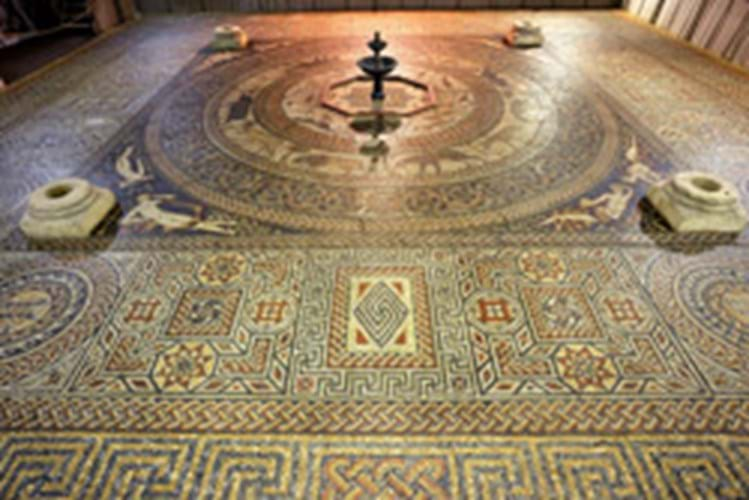
The project took brothers Bob and John Woodward ten years to complete and consists of 1.6 million hand-cut clay tesserae. The remains of the original Orpheus pavement are in the large hall of the Roman villa at Woodchester, near Stroud. The Woodward brothers visited the mosaic at its most recent uncovering and public viewing in 1973, after which Bob Woodward's research began.
The result is part fantasy, part fact. The earliest report Mr Woodward found was from 1693 when Celtic scholar Edward Llwyd recorded having seen "birds and beasts on the floor". A manuscript in the Bodleian Library reported that in 1711 visitors noticed what they thought was a wyvern (in fact, it was a griffin). There are various other references down the years.
The Woodward brothers also studied other Orpheus mosaics to make their reconstruction of missing sections as accurate as possible.
The original pavement is made of limestone in seven different colours and 14 shades, but recreating it in stone would have been too expensive and heavy, so the Woodward brothers used naturally coloured clay, only using artificial colour to represent water.
Twelve tons of clay were fired into strips and then cut into cubes. Colour slides of the original were projected from below onto a transparent workbench and each tessera was cemented onto boards in 400 sections that could be moved individually and assembled on a flat surface.
Both the original and reconstructed pavements are in the Guinness Book of Records under "Largest Mosiac". The reconstruction, already in need of restoration, has been on display at Prinknash Abbey. Chorley's, who are based in Prinknash Abbey Park, will sell the pavement in situ but, as yet, have not set an estimate.
Contact 01452 344499.
A catalogue will be available in early June at www.simonchorley.com
By Anna Brady




